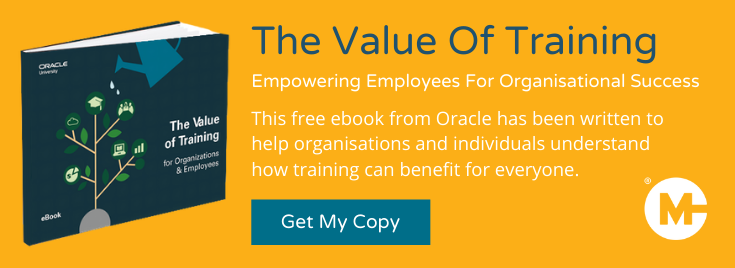Key Tips for an Effective IT Employee Training Programme

Developing an effective employee training programme requires careful planning, knowledge, and a focus on the core strengths that you want your staff to improve. All training programmes involve an investment of time and money on the part of your business and the employee, so how should you structure an IT employee training programme in practice?
What Does Your Company Need From Training?
The first step of any training programme should be to designate the key areas you want to improve, employee-by-employee. What new skills will each accreditation add to your company, and how does this translate into performance benefits and growth opportunities? What would be most effective skills investment to build your company, long-term? What courses would best contribute to the personal development of your staff – and thus aid in staff retention?
It’s worth conducting a Training Needs Assessment (TNA) if you’re going to be doing more than training a handful of employees. This is a focused, mini-audit that analyses what areas of your company could be improved, outlines how that might be achieved through teaching and training, and estimates the time and cost needed to deliver on those goals. Each TNA can be tailored to look at different areas of your company and workforce.
Develop Clear End Objectives
Once you’ve identified what you’re aiming for, the next step is to set quantitative and qualitative targets that tell you the extent to which your training scheme has succeeded. Classic techniques such as SMART Goal setting (Specific, Measurable, Achievable, Realistic, Timely) can map out managerial objectives and identify how each training course fits into your wider business plan.
Key Performance Indicators (KPI’s), certificate accreditation levels, and added value per month in terms of sales and/or performance can help here. It’s also worth writing a checklist of steps you’ll need to take to fully complete your training scheme. Take the timeframe for delivery and the time you’ll need to set aside to train each member of staff into account during the planning stage. Sticking to a regular weekly schedule will aid you and your employees when it comes to fitting training around regular work.
Create Unique Course Training Materials & Check Workplace Compatibility
How will your courses connect with your employees and the work they’re assigned to do? Your technicians and engineers must know exactly how your IT training will apply to their day-to-day tasks. Personalised supplementary material, such as worksheets and slides, can add value to course tuition, and give real-world examples of how the new training will function in practice.
It’s worth checking if there are any differences between the course material and your current IT setup. Some standard packages won’t take into account legacy software – there can be big differences between builds and generations. You may need to plan ahead if you need to purchase and install new devices or software to get the best out of the courses you pay for.
Refreshers & Updates
Once you’ve finished the core of your training program, make sure your employees are kept up to date with any additions made to their programs and that they haven’t forgotten the skills they’ve learnt. Monthly revision sessions and tests can be an effective strategy to stop useful knowledge from evaporating away as time goes on.
Managed Learning From CourseMonster
Did you know that CourseMonster can structure your training schemes for you through our Managed Learning Service? As well as brokering remote IT training courses, we’re also experienced in effective delivery within a combined IT training strategy. We know what makes a good training programme – and also know how to structure a group of courses to get the best possible results for your company. Please message us today via our brand new website to find out more.
Image Source: Pixabay





Comments ()